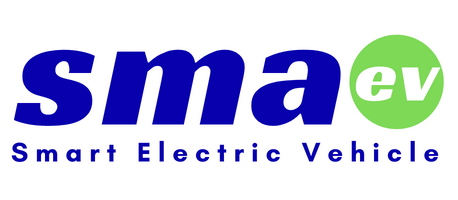Technology that captures, converts and distributes energy effectively and efficiently will enable the shift from fossil fuels to renewable energy sources and help create a sustainable future
Solar energy and high-voltage batteries were once exceptions to how people received and used the energy powering their homes and cars. Today, however, these technologies are becoming more prevalent than ever, while also being smarter and more efficient.
“In about 10 years, solar energy will be the largest source of energy for much of the world,” said Henrik Mannesson, general manager for Grid Infrastructure at our company. “We’re now undergoing an energy transition that’s completely changing how we generate, consume and store energy.”
Henrik and other TI experts recently held a roundtable explaining challenges and trends at the heart of this ongoing energy transition from fossil fuels to renewable energy, the importance of energy interoperability and how our technology plays a key role.
Here are five ways technology innovation is helping build the energy ecosystem:
1. Harnessing solar energy safely and efficiently.
“Every square meter of Earth gets on average about a kilowatt of power from sunlight,” Kannan said. “We need to tap into more of that energy. Extracting that energy efficiently requires new high-voltage technology in and around the solar panels.”
Our advanced technologies like gallium nitride (GaN) FETs – devices that help convert DC power coming out of the solar panel into AC power used by our homes – enable the design of microinverters that are small and inexpensive enough to be mounted directly on or near the panels themselves.
2. Creating faster, more reliable EV charging.
“We need more charging stations, and we want them to charge vehicles faster, but also safer and more reliably,” Henrik said. “One trend supporting a rise in charger access is the development of hardware and software standards for charging that enable a wider range of vehicles to hook up to a variety of charging stations. TI, for example, is already providing vehicle and charger manufacturers tools that simplify designing to new charging standards.”
Energy needs are high when the sun isn’t shining, said Matt Xiong, product line manager for Battery Management Systems. That means there is a high demand to store solar and other types of renewable energy in batteries for use later. Unfortunately, lithium-ion batteries, which are common in energy storage systems (ESS), can be vulnerable to overcharging, potentially leading to damage from overheating and a safety risk.
“The challenge is how to maximize the efficiency and capacity of each battery cell,” Matt said. “The key is to have precise and intelligent monitoring of charge levels, the rate of charge, and the battery’s temperature. It’s critical to efficiently track what you’re putting in and getting out. The more accurately you can measure that, the more capacity you can safely get out of the battery.”
Our company has monitoring solutions based on its industry-leading sensor technology and microcontrollers. In addition, GaN semiconductors add extra performance and efficiency to many of the components in and around batteries by providing faster, lower-loss switching.
4. Enabling intelligent control of your home energy ecosystem.
While better EV charging, solar energy and storage systems are all essential to the energy transition – or the shift toward using more-renewable energy sources – the biggest gains will come from integrating all three under intelligent control.
“You can start doing the same things with energy that we do today with data in a home network,” Kannan said. “That means being able to safely and efficiently produce, transfer, store and consume energy in ways that meet the home’s needs at the lowest costs. The individual components have to be linked within a home energy ecosystem. Even your EV becomes part of this ecosystem. It’s not just a vehicle anymore; it’s also 100 kWh of battery capacity that happens to be in your garage.”
When the solar panels produce more electricity than the house consumes, the excess can go not only to the home’s ESS but also to the EV’s battery, which can dole out energy to the home at night or during cloudy days through bidirectional smart-switch technology. Over time, emerging standards will connect devices and appliances to the home energy ecosystem, including heat pumps, to further improve energy efficiency.
5. Building a dynamic, sophisticated energy network.
Many TI technologies are enabling the development of the home ecosystem, including current sensors, microcontrollers, power converters and high-voltage isolation components. “These add intelligence and connectivity layers that provide flexibility, efficiency and control,” Kannan said. “That’s what lets you squeeze every last bit of utility from every joule of energy that’s generated or stored.”
Integration and smart control should ultimately extend beyond the home to the power grid, Henrik said. “The next generation of smart electric meters will decide when to store the energy from the home’s solar panels, when to charge the EV, and when to sell energy back to the grid,” he said. “The grid’s intelligence will work in concert with the home’s own intelligence, considering everything from fluctuating energy prices to grid capacity to vehicle usage patterns to weather forecasts, in order to make the best use of energy at the lowest cost.”
Source: TI





